Abderrahim Benslimane
A Multi-Domain VNE Algorithm based on Load Balancing in the IoT networks
Feb 07, 2022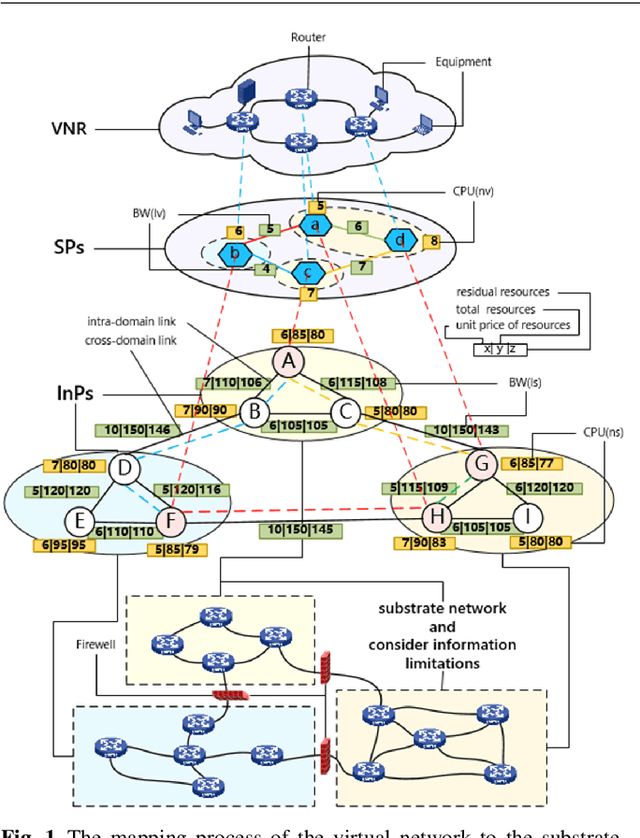
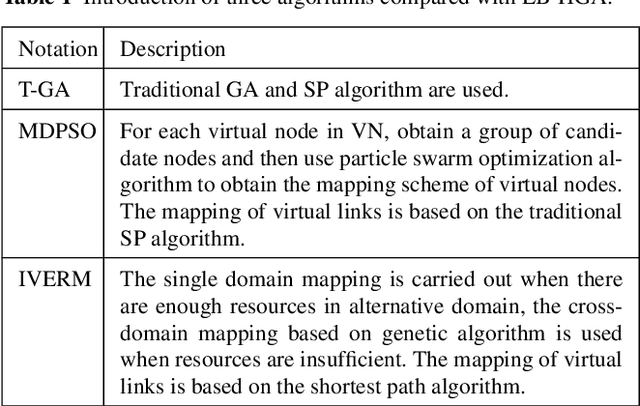
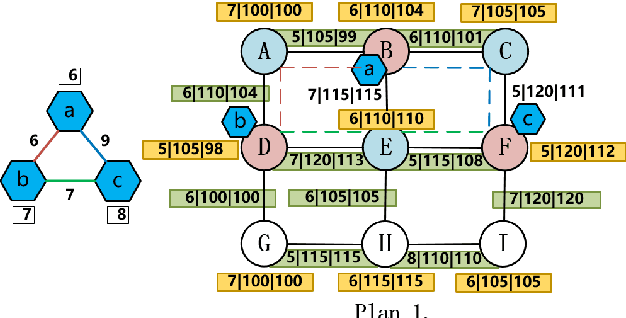
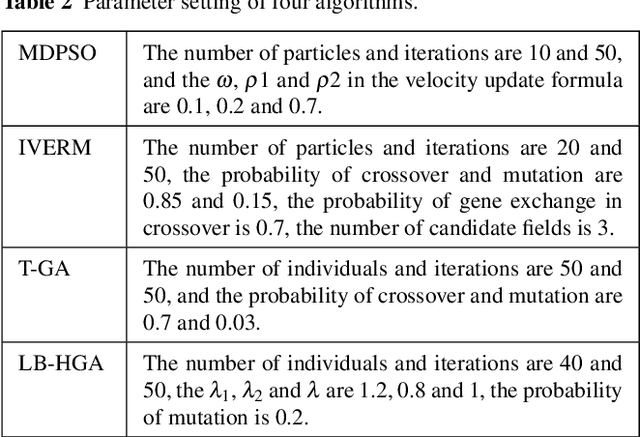
Abstract:Virtual network embedding is one of the key problems of network virtualization. Since virtual network mapping is an NP-hard problem, a lot of research has focused on the evolutionary algorithm's masterpiece genetic algorithm. However, the parameter setting in the traditional method is too dependent on experience, and its low flexibility makes it unable to adapt to increasingly complex network environments. In addition, link-mapping strategies that do not consider load balancing can easily cause link blocking in high-traffic environments. In the IoT environment involving medical, disaster relief, life support and other equipment, network performance and stability are particularly important. Therefore, how to provide a more flexible virtual network mapping service in a heterogeneous network environment with large traffic is an urgent problem. Aiming at this problem, a virtual network mapping strategy based on hybrid genetic algorithm is proposed. This strategy uses a dynamically calculated cross-probability and pheromone-based mutation gene selection strategy to improve the flexibility of the algorithm. In addition, a weight update mechanism based on load balancing is introduced to reduce the probability of mapping failure while balancing the load. Simulation results show that the proposed method performs well in a number of performance metrics including mapping average quotation, link load balancing, mapping cost-benefit ratio, acceptance rate and running time.
Security-Aware Virtual Network Embedding Algorithm based on Reinforcement Learning
Feb 03, 2022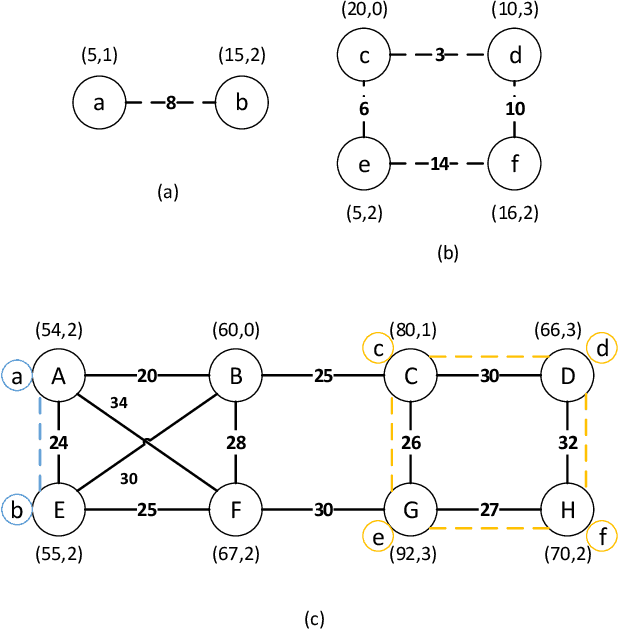
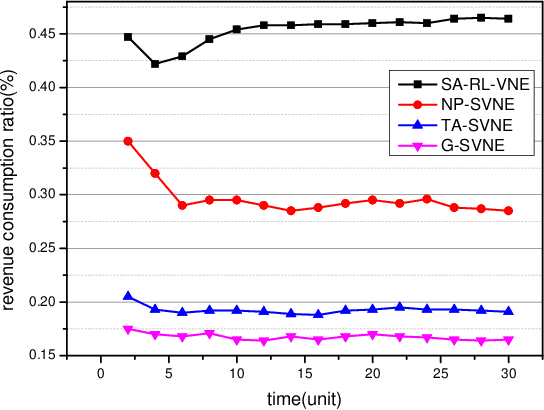
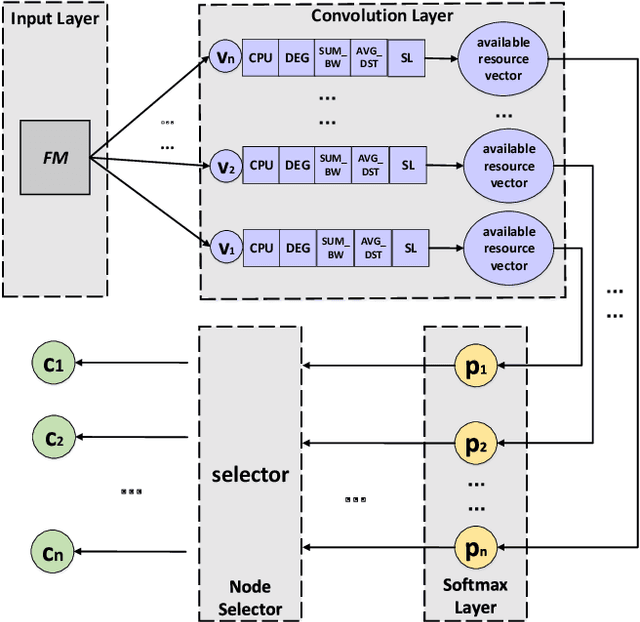
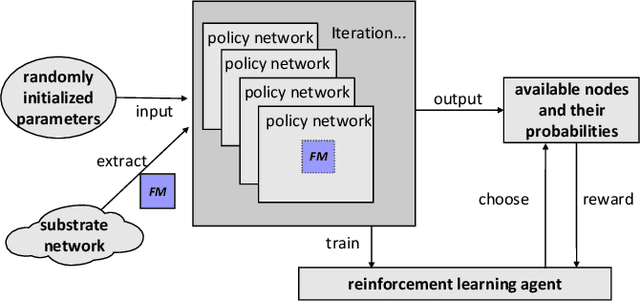
Abstract:Virtual network embedding (VNE) algorithm is always the key problem in network virtualization (NV) technology. At present, the research in this field still has the following problems. The traditional way to solve VNE problem is to use heuristic algorithm. However, this method relies on manual embedding rules, which does not accord with the actual situation of VNE. In addition, as the use of intelligent learning algorithm to solve the problem of VNE has become a trend, this method is gradually outdated. At the same time, there are some security problems in VNE. However, there is no intelligent algorithm to solve the security problem of VNE. For this reason, this paper proposes a security-aware VNE algorithm based on reinforcement learning (RL). In the training phase, we use a policy network as a learning agent and take the extracted attributes of the substrate nodes to form a feature matrix as input. The learning agent is trained in this environment to get the mapping probability of each substrate node. In the test phase, we map nodes according to the mapping probability and use the breadth-first strategy (BFS) to map links. For the security problem, we add security requirements level constraint for each virtual node and security level constraint for each substrate node. Virtual nodes can only be embedded on substrate nodes that are not lower than the level of security requirements. Experimental results show that the proposed algorithm is superior to other typical algorithms in terms of long-term average return, long-term revenue consumption ratio and virtual network request (VNR) acceptance rate.
 Add to Chrome
Add to Chrome Add to Firefox
Add to Firefox Add to Edge
Add to Edge